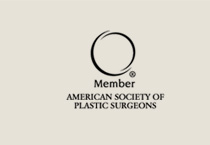Breast Reconstruction
 Breast reconstruction restores a natural, symmetrical appearance to the bosom, maintains body proportion, allows clothes to fit better, and most important of all, boosts self-confidence for women who have lost one or both breasts to mastectomy or who lack breasts due to a congenital or developmental abnormality. Reconstructive surgeons strive to create a new breast and nipple that resemble the woman's natural breast as closely as possible in shape, size and position.
Breast reconstruction restores a natural, symmetrical appearance to the bosom, maintains body proportion, allows clothes to fit better, and most important of all, boosts self-confidence for women who have lost one or both breasts to mastectomy or who lack breasts due to a congenital or developmental abnormality. Reconstructive surgeons strive to create a new breast and nipple that resemble the woman's natural breast as closely as possible in shape, size and position.
Women whose cancer seems to have been eradicated with mastectomy are the best candidates for breast reconstruction. Those with health problems such as obesity and high blood pressure and those who smoke are advised to wait. Others prefer to postpone surgery as they come to terms with having cancer, consider the extent of the procedure, or explore alternatives.
The reconstruction itself consists of multiple operations, the first of which involves creation of the breast mound and is performed during or after mastectomy in a hospital under general anesthesia. Later surgeries, if necessary, may be done in the hospital or an outpatient facility, with either general or local anesthesia.
There are several ways to reconstruct the breast, both with and without implants; your breast surgeon and plastic surgeon should work together with you in deciding which is best for you.
Procedures for Breast Recontruction
The most common technique combines skin expansion with implant insertion. First, the surgeon inserts a balloon expander beneath the skin and chest muscle where the reconstructed breast will be located. A saline (salt water) solution is then injected into the expander through a tiny valve beneath the skin over a few weeks or months, eventually filling it and stretching the skin. The expander is then replaced with a permanent implant. A final procedure reconstructs the nipple and areola (dark area of skin around the nipple). Some patients do not require tissue expansion and begin with the implant.
Another type of implant reconstruction involves the creation of a skin flap using tissue from other parts of the body. If the flap is not large enough to serve as the new breast by itself, an implant is then inserted beneath it. Tissue for the flap consists of skin, fat and muscle from the back, abdomen or buttocks and may either be surgically removed and reattached (free flap, requiring a microvascular surgeon) or remain connected to its original blood supply and "tunneled" through the body to the chest (pedicled flap).
Both implant insertion and tissue flap surgery are followed by nipple and areola reconstruction. The reconstructed breast will probably look and feel different from the natural breast. Further surgery may be desired to adjust the natural breast to better match the reconstructed one, although a perfect correspondence in size, shape and height is unlikely.
FREQUENTLY ASKED QUESTIONS ABOUT BREAST RECONSTRUCTION
Can the opposite breast be treated during the same procedure?
If a mastectomy has only been performed on one breast, the ideal reconstruction procedure would only require shaping and sculpting of the affected breast. However, many women need both breasts to be modified in order to achieve symmetric breasts. Drooping (ptotic) breasts are often hard to match in appearance during breast reconstruction, so both breasts can be treated during one procedure to reduce costs and recovery time for patients.
During breast reconstruction, the opposite breast is often shaped with a breast lift to achieve symmetry. This procedure lifts the breast to reduce drooping and match the newly reconstructed breast. Scars from a breast lift are usually around and below the areola and can be easily concealed. Breast reduction may be needed for women with larger and ptotic natural breasts.
How do breasts look and feel after breast reconstruction?
The results of breast reconstruction vary depending on the patient's individual case and the type of procedure used. While your doctor strives to achieve the most natural-looking results for your procedure, reconstructed breasts will not have the same sensation and feel of a real breast. It is important for patients to remember this and to have realistic expectations before undergoing the reconstruction procedure.
Is breast reconstruction right for me?
Although breast reconstruction is a beneficial procedure for many women, it is not right for everybody. In order to undergo any kind of breast reconstruction surgery, women should be in good general health and able to handle the stress of a surgical procedure. Certain factors may increase your risk of complications with breast reconstruction surgery, and it may be best to postpone this procedure until risk factors are reduced.
If you are interested in learning more about breast reconstruction, and to find out if this procedure is right for you, please call us today to schedule a consultation.
Those interested in Breast Reconstruction should find a plastic surgeon they can trust. From the initial consultation through post-surgical recovery, Dr. Lalla emphasizes an honest doctor-patient relationship that allows his patients to remain well informed of their surgical options.
| Click here for procedure animations |
To learn more about the benefits of a Breast Reconstruction and schedule a consultation please contact us today : (609)584-8898




